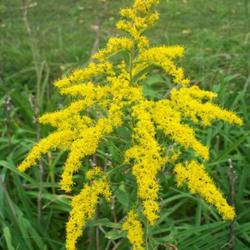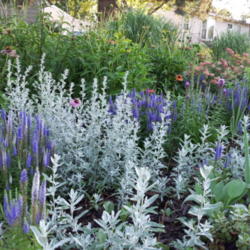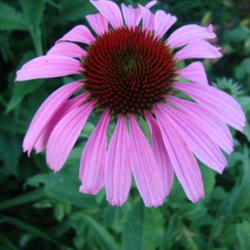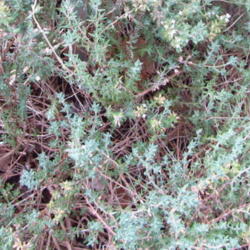A few years ago if you had asked me what I thought when I heard the word "Xeriscape," I would have immediately said "Cactus and rocks." How little I knew and how quickly my mind was forever changed.
My little corner of Kentucky doesn't seem to fit very well into any particular climate zone. We are west of Mid Atlantic states, north of Southeastern states, south of the Great Lakes and right on the eastern edge of the Central Plains. It's no wonder the forecasters have trouble predicting our weather. It's also very confusing for our plants, which have been told they live in Zone 7, but our weather seems to come from every direction.
In 2012 we were in a severe drought that began in early June and seemed to never end. By the end of June, right in the middle of what normally is my glorious parade of daylilies, my yard and gardens were shades of brown that crunched when I stepped through them. The grass was nonexistent and the leaves were dry and fell from the trees. Brown was the new color for that dry summer. These images show the lone sunflower that my grandson planted for me and I was able to keep watered, but behind it and to the side you can see what was left of two daylily beds. The images were taken in July.
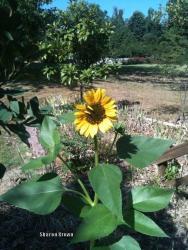

Rivers were low, water was limited, and there was such a danger of fires. It was a sad time as I looked around my little brown half-acre. That was the year I learned by necessity the definition of xeriscaping: landscaping and gardening that reduces the need for supplemental water. Water has become an expensive and limited resource, and for many of us it's time for a much needed change.
During that long dry summer I learned that I had several plants that never seemed thirsty. They remained green and continued to bloom while others around them shriveled and died. It came as a surprise when I realized that if I grouped those drought-tolerant plants together in various areas of my yard, I could have beautiful clusters of blooms even during a drought. And that was the moment I knew for sure what xeriscapes were, groupings of plants that need no supplemental water. How easy gardening would be if we remembered that simple definition.
And the plants that survived the drought in my garden? Well, here's a list I made as I wandered around my crunchy yard:
In addition, there were the tall bearded irises that managed to bloom before the worst of the drought. They were alive and well, too. By the next summer we'd had enough rain to pull us out of the drought, and this year, after an unusually cold, icy winter, we've also had an abundance of rain. It's another July day now and I can stand in the midst of many shades of green and a glorious array of colorful daylilies. I never let myself forget the crunchy brown summer of two years ago. Slowly my landscape is becoming a xeriscape and I'm enjoying the change. One day I hope it becomes nearly maintenance free; not that I'm looking for another severe drought, but maintenance free surely would be great!


